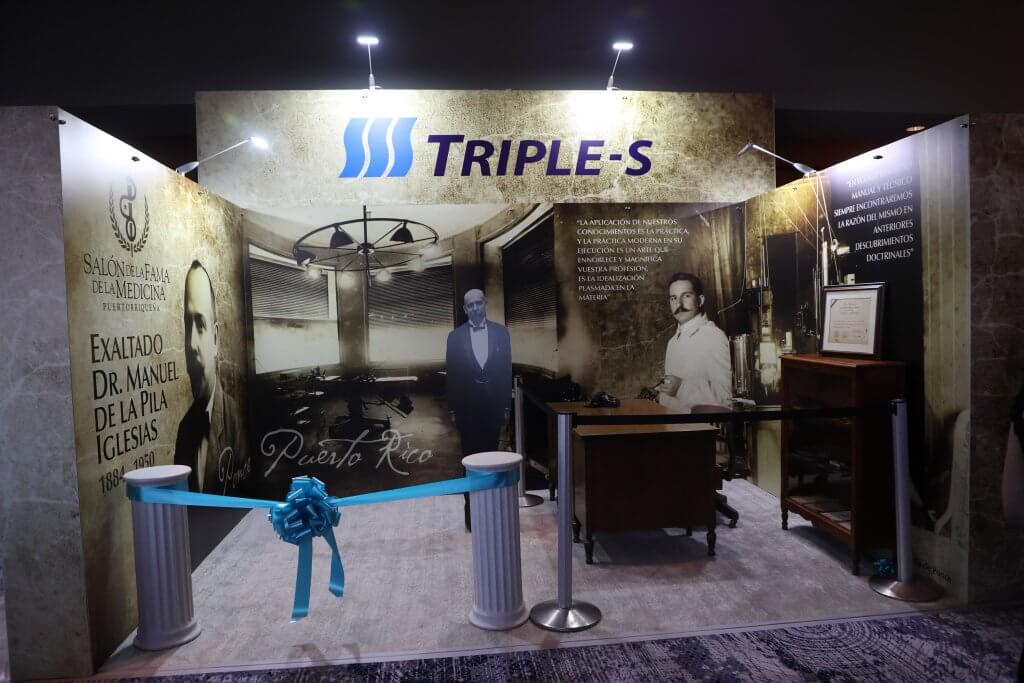Another inductee to the Hall of Fame is Dr. Oscar Costa Mandry, who as a top medical student he won the Gold Medal from the School of Medicine of the University of Maryland. Later he specialized in pathology and bacteriology at the University of Columbia. Dr. Costa Mandry is known as the father of medical technology in Puerto Rico. In addition, his research findings established the link between dysentery and hurricanes. He advised the Rockefeller Foundation in establishing laboratories in the Dominican Republic and received the Order of Juan Pablo Duarte from the Dominican Republic in 1930 for his contributions to the health system of this neighboring country.
Another great contribution came from Dr. Manuel de la Pila Iglesias, who was able to provide greater access to healthcare when he promoted legislation to establish the first health plan in Puerto Rico, then Blue Cross, today part of Triple-S. Also, honored were the Auxilio Mutuo Hospital and Dr. Guillermo Picó Santiago, a renowned ophthalmologist. These women and men contributed to the advance of medicine and science both in Puerto Rico and in the international sphere, despite the many challenges they faced. We thank the Hall of Fame of Puerto Rican Medicine for keeping this history alive. They serve to inspire us to face today’s challenges.

Dr. Norman Maldonado represents another extraordinary model to follow. A renowned hematologist in Puerto Rico and beyond, with 70 publications that he either authored or co-authored, he was also Dean of the Medical Science Campus of the University of Puerto Rico. During his career, he participated in the formulation of public policy. As Dean, he had many accomplishments, creating outpatient clinics, the internship plan for the faculty, and instituting differed compensation while keeping all the education programs accredited.
Other giants of medicine who were also honored by the Hall of Fame of Puerto Rican Medicine are no longer with us, but they left an important legacy. That is the case of Dr. Isaac González Martínez, a well-known oncologist who founded the Puerto Rican Cancer League and sought ways to treat cancer patients for free. Open to collaboration, he worked closely with Dr. Bailey Kelly Ashford to eradicate uncinariasis (hookworm) which caused anemia in many in Puerto Rico during that period. Also, investigations led by Dr. González Martínez identified bilharzia, a new parasite in 1904, a discovery that was recognized internationally in 1907. Today the cancer hospital at the Medical Center is named after him.
Dr. Bailey Kelly Ashford arrived in Puerto Rico during the Spanish-American War, married a woman from Mayaguez and dedicated his professional life to improve the health of Puerto Ricans. His research was able to identify the cause of anemia among the rural population, which was the majority on the island at the time. The absence of shoes and lack of outhouses led many to get infected with the parasite that caused anemia. He was able to treat patients with Thymol and lobbied for funds to buy shoes and build outhouses. He cured thousands and reduced deaths from the condition. Uncinariasis was finally eradicated in the 60s. His contributions were recognized internationally. The Rockefeller Institute used his findings to establish a similar campaign in the U.S. South.

Dr. Norman Maldonado represents another extraordinary model to follow. A renowned hematologist in Puerto Rico and beyond, with 70 publications that he either authored or co-authored, he was also Dean of the Medical Science Campus of the University of Puerto Rico. During his career, he participated in the formulation of public policy. As Dean, he had many accomplishments, creating outpatient clinics, the internship plan for the faculty, and instituting differed compensation while keeping all the education programs accredited.
Other giants of medicine who were also honored by the Hall of Fame of Puerto Rican Medicine are no longer with us, but they left an important legacy. That is the case of Dr. Isaac González Martínez, a well-known oncologist who founded the Puerto Rican Cancer League and sought ways to treat cancer patients for free. Open to collaboration, he worked closely with Dr. Bailey Kelly Ashford to eradicate uncinariasis (hookworm) which caused anemia in many in Puerto Rico during that period. Also, investigations led by Dr. González Martínez identified bilharzia, a new parasite in 1904, a discovery that was recognized internationally in 1907. Today the cancer hospital at the Medical Center is named after him.
Dr. Bailey Kelly Ashford arrived in Puerto Rico during the Spanish-American War, married a woman from Mayaguez and dedicated his professional life to improve the health of Puerto Ricans. His research was able to identify the cause of anemia among the rural population, which was the majority on the island at the time. The absence of shoes and lack of outhouses led many to get infected with the parasite that caused anemia. He was able to treat patients with Thymol and lobbied for funds to buy shoes and build outhouses. He cured thousands and reduced deaths from the condition. Uncinariasis was finally eradicated in the 60s. His contributions were recognized internationally. The Rockefeller Institute used his findings to establish a similar campaign in the U.S. South.
